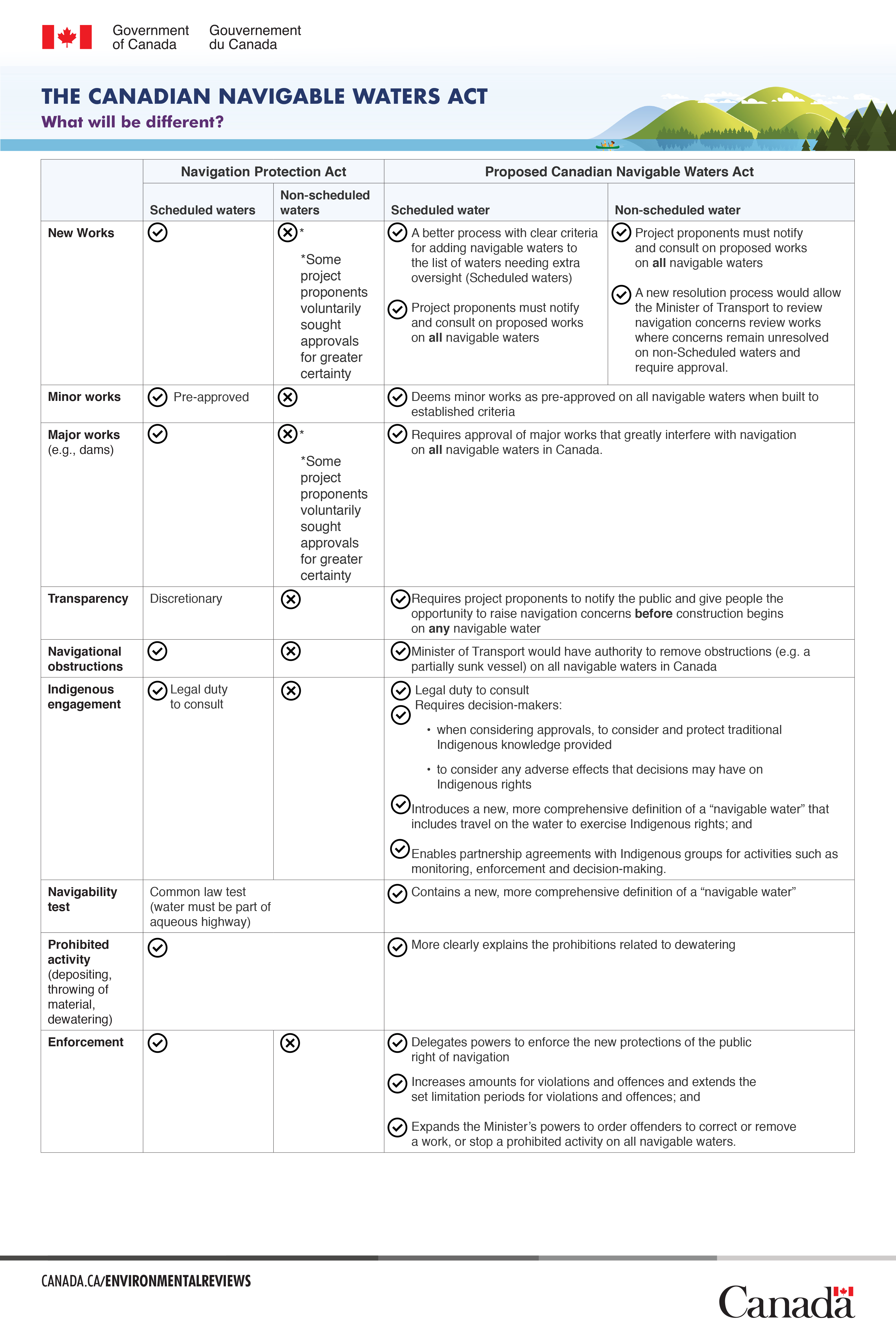The Canadian Navigable Waters Act
Click on image to enlarge

Long description
What will be different?
| Navigation Protection Act | Proposed Canadian Navigable Waters Act | |||
|---|---|---|---|---|
| Scheduled waters | Non-scheduled waters | Scheduled water | Non-scheduled water | |
New Works |
* Some project proponents voluntarily sought approvals for greater certainty |
A better process with clear criteria for adding navigable waters to the list of waters needing extra oversight (Scheduled waters) |
Project proponents must notify and consult on proposed works on all navigable waters |
|
Minor works |
|
Deems minor works, as pre-approved on all navigable waters when built to established criteria |
||
Major works |
|
* *Some project proponents voluntarily sought approvals for greater certainty |
Requires approval of major works that greatly interfere with navigation on all navigable waters in Canada. |
|
Transparency |
Discretionary |
Requires project proponents to notify the public and give people the opportunity to raise navigation concerns before construction begins on any navigable water |
||
Navigational obstructions |
|
Minister of Transport would have authority to remove obstructions (e.g. a partially sunk vessel) on all navigable waters in Canada |
||
Indigenous engagement |
|
Legal duty to consult
Introduces a new, more comprehensive definition of a “navigable water” that includes travel on the water to exercise Indigenous rights; and |
||
Navigability test |
Common law test |
Contains a new, more comprehensive definition of a “navigable water” |
||
Prohibited activity |
|
More clearly explains the prohibitions related to dewatering |
||
Enforcement |
Delegates powers to enforce the new protections of the public right of navigation |
|||